To replace the cancelled BGG.Con 2020 this last weekend (Nov. 18-22), Board Game Geek held a virtual convention called BGG@Home 2020. While not getting to go to the convention is a bummer, Corey and Nikki were excited to get a chance to play some newly released (or soon to be released) games even if it was only virtually. After all, we saved quite a bit on flights or hotels this way…more money to spend on more games, right?
Here’s a quick recap of seven upcoming or recently released games that we had the pleasure of demoing at the convention:
10 Gallon Tank

Publisher: Winsmith Games
Release Date: November, 2020
Price: $
Players: 2-5
Play Time: 15-20 minutes
Age Recommendation: 8+
Drafting
Set Collection
Competitive
In this unique and colorful set collection game, players take turns to make a split in a 4×4 array of cards dealt from a central deck and then draft one of those sections to their hand. The deck contains cards representing six different types of fish cards (which are each scored in different ways at the end of the game) and one treasure chest card (worth 7 points). In addition, one of three Goal Cards is revealed to provide an extra point bonus for any player who either avoids one type of fish entirely, collects five of one type, or at least one of five different types. When the final round is complete, each player’s hand is revealed and scores are totaled.
Our Thoughts
Corey: This game is simple to learn, quick to play, and unlike any other drafting game that I’ve ever played. The theme is fun and colorful and matched with some fantastic art by Alex Pushkarev.
Making the splits can feel overwhelming at times, especially when you are the first or second player to do so. There’s a lot to consider and a lot of predicting of opponent’s moves that can be done to optimize those decisions. For a game like 10 Gallon Tank, however, I think its important to decide that this doesn’t need to be that type of highly competitive environment. If players are willing to make quick decisions and concentrate on enjoying each other’s company over a fun game of cards rather than playing a cutthroat game of “fish collection”, I think this game is doing its job well.
This one would be a fantastic family game or a great filler between heavier games or at the end of night where a quicker set up and lighter game play is preferred.
Anansi

Publisher: HeidelBÄR Games
Release Year: 2020
Price: $
Players: 3-5
Play Time: 25-35 minutes
Age Recommendation: 10+
Anansi is a quick to learn to learn and easy to play trick taking card game played over three rounds that forces players to try to plan ahead with limited knowledge of their opponent’s hands. Each trick represents a story that “Anansi the Spider” (the great trickster god of knowledge and stories who originated in West African Folklore) is telling, but winning a trick is only half of what is needed to score points. In order for a player to score a point from any trick they win they must trade in cards to gain followers. This is done by playing a card with a follower symbol outside of the trick (effectively giving up the opportunity to win that trick). If a player succeeds in getting the same number of tricks as followers in a round they score bonus points which increase with each round played.
One aspect of Anansi that makes it difficult for a player to predict how many tricks they might win is the potential for the trump suit to change throughout each round. The trump suit is determined by the cards that all players have played outside of tricks in the round to gain followers (the suit with the largest number of cards played for followers is designated trump – but in the event of a tie the leftmost suit is trump).
The game features bright and colorful artwork by Nigerian artist, Dayo Baiyegunhi, and South African artist, Emmanuel Mdlalose. Game designers Cyril Blondel and Jim Dratwa originally called this game Eternity, but have since reimagined the theme to better fit the game play.



Promotional images from HeidelBÄR Games.
Our Thoughts
Nikki: Anansi is an enjoyable trick-taking game with a twist! It’s fun to try to strategize how to gain the same number of followers as tricks you win. The changing trump suit forces players to shift their strategy to make sure that they can still win enough tricks for the followers they have gained. This would be a good option for light-weight gateway game for all your relatives who love playing the traditional Hearts or Spades trick-taking games.
For those of us who don’t have three people in our households to play with the game designers have created solo and two-player variants of the game which can be found on the HeidleBÄR website (Note that the instructions are only available in German at the time of this article).
Bonfire

Publisher: Hall Games & Pegasus Spiele
Release Year: 2020
Price: $$$
Players: 1-4
Play Time: 70-100 minutes
Age Recommendation: 12+
Set Collection
Tile Placement
Competitive
Bonfire is a fantasy-themed Euro-style game in which each player takes on the role of Gnomes on the distant planet of Asperia who have been tasked with rekindling the now extinguished Bonfires in their cities. The Bonfires provide the light and energy the Gnomes need to survive.
Players must carefully use their available resources and actions to work towards igniting up to seven Bonfires and bringing Guardians from remote islands to their cities to help tend to the Bonfires. The game provides players with a number of options each turn to allow players the freedom to develop their own game play strategy. These options include a mix of point to point movement, worker placement, tableau building, tile placement, resource gathering, and market drafting. There’s a lot going on here.
Bonfire is one of two board games released in 2020 designed by prominent Euro-style game designer Stefan Feld (Castles of Burgundy, Castles of Tuscany, Strasbourg, Bruges).

Promotional images from Hall Games.
Our Thoughts
Nikki: It is nice to see a heavy-weight Euro-style game with such a unique theme. Bonfire plays out like an epic fantasy story in which players are taking on the role of the hero trying to save their civilization complete with all the difficult decisions heroes have to make.
While Bonfire is a hard game to describe (see summary above), the actual gameplay is straightforward. Within a half hour of time (thanks to the game host and game rules book), I felt like I had a good grasp on the game mechanics and started to see how I could focus on different aspects of game play to get the most value based on the actions I had available. I admit that I still struggled at times whilst playing Bonfire with making decisions because there are just so many choices! There is a real danger here of falling into a pattern of over-analysis or decision paralysis every turn. Given that, I think players who can come up with a plan from the beginning based on the available information on the board (task tiles, Path Tiles, player boards, Fate tiles, Gnome cards) and use that plan to inform their decision making will enjoy this game the most. Note that the task tiles, Path Tiles, player boards, Fate Tiles and Gnome cards are all subject to a variable set-up so each game play will require formulating a different plan which gives Bonfire great replay value.
Ultimately, Bonfire is a great “thinky” game that I think will be a big hit among players who love to be challenged to plan ahead and make difficult decision.
Kitara

Publisher: IELLO
Release Year: 2020
Price: $$
Players: 2-4
Play Time: 40 minutes
Age Recommendation: 10+
Area Control
Hand Management
Competitive
Kitara is an area control game set in the fictional land of Kitara. This game features a combat system similar to Smallworld in which a larger quantity of pawns will always triumph in combat over a smaller group. However, in Kitara, pawns are never lost in combat and are instead forced to retreat back to the nearest territory occupied by friendly units.
The quantity and type of pawns each player has and the number of move actions on the board are both represented by cards that players players draft at the start of each turn from a central supply. In addition, these cards can provide increases to the drafting choices that a player has in subsequent rounds and increases to the amount of victory points acquired at the end of each round. Each of these details is represented by symbology that is neatly organized in one of three rows displayed on the card face.
Players must “feed their cards” at the end of each turn by ending with a Warrior-type pawn in a savannah space for each card they have drafted. If they cannot support all of their cards, they must discard what they are unable to “feed” and remove any pawns that are pictured on those cards. Kitara also includes two other types of pawns which cannot be used to feed cards but instead, provide different functionality. Master animal pawns provide victory points when they end the turn in forest spaces and Hero pawns will collect a victory point token each time they attack an occupied region.
The card deck that is used to fill the draft market is composed of five different levels of cards that will appear sequentially as the game goes on. Each new level includes cards that provide more resources than the last that may be more appropriate for each stage of the game. The arrival of the level five cards in the central market triggers the ending of the game. Players will get one additional turn at this point before victory points are scored.

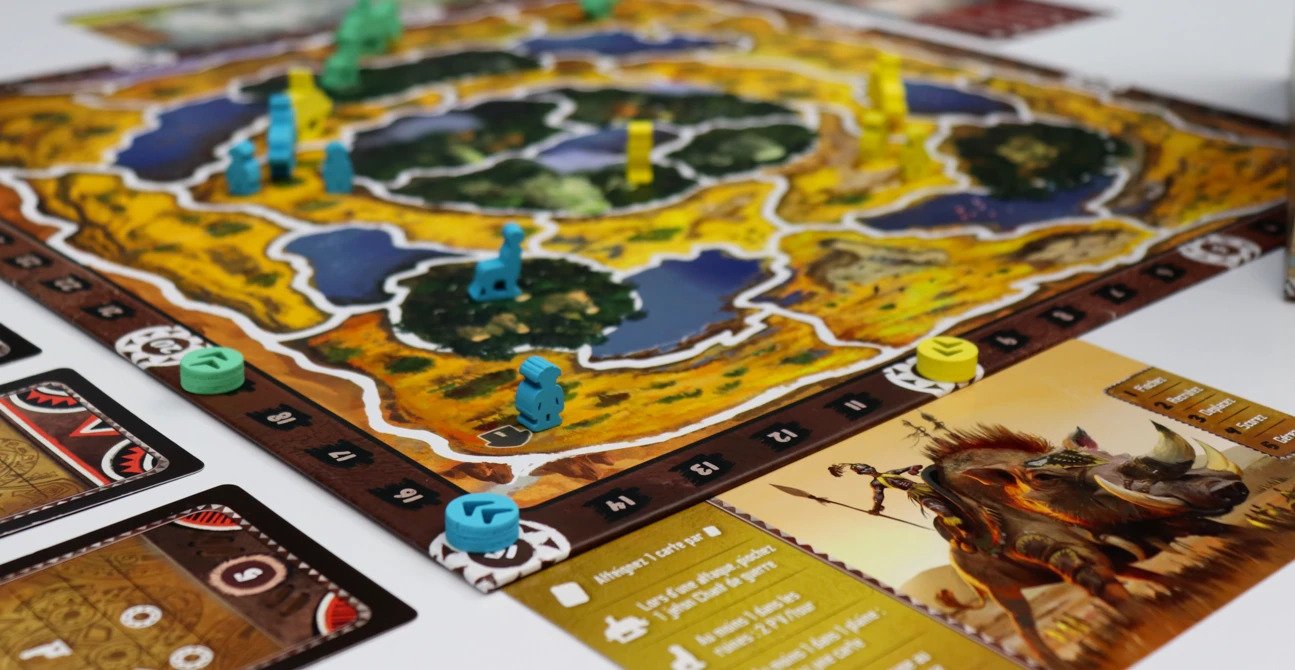


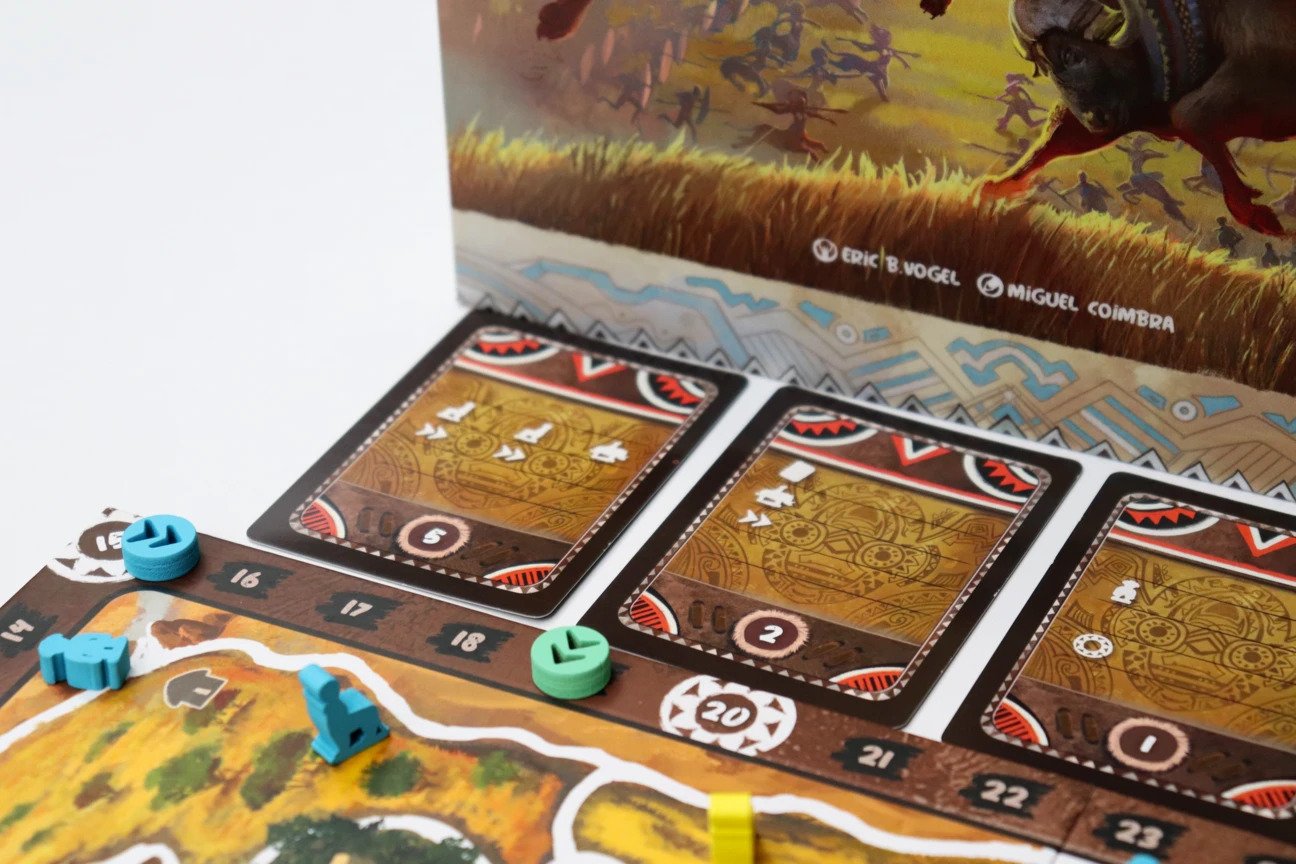

Promotional images from IELLO.
Our Thoughts
Corey: I really dig the theme of Kitara. It’s nice to see a game that uses African themes without being about colonialism. Beyond that, the art is stunning and everything is laid out in a way that makes this game very accessible and functionally streamlined.
Mechanically, the game is fun and fast paced, and relatively friendly for a war game. The fact that you don’t suffer any losses in combat was a little tough for me to wrap my head around at first but as the game went on, I really started to buy into this. It encourages a lot of action and deters players from playing passively and defensively which I had a lot of fun with personally but could see how more strategic war game purists may take issue with this.
The card system is a really interesting take on the acquisition of troops and ability to move on the board and seems to be well-balanced, too. I was impressed by this.
While Kitara played out quite a bit differently than I had initially expected, I enjoyed it quite a bit. I could see this one fitting in relatively well as a great gateway title in the area control genre. It passes on a lot of the mechanical bells and whistles that you may come to expect from war games and trades that for a very streamlined and simplified system that is focused on fast-paced area control combat.
Lost Ruins of Arnak
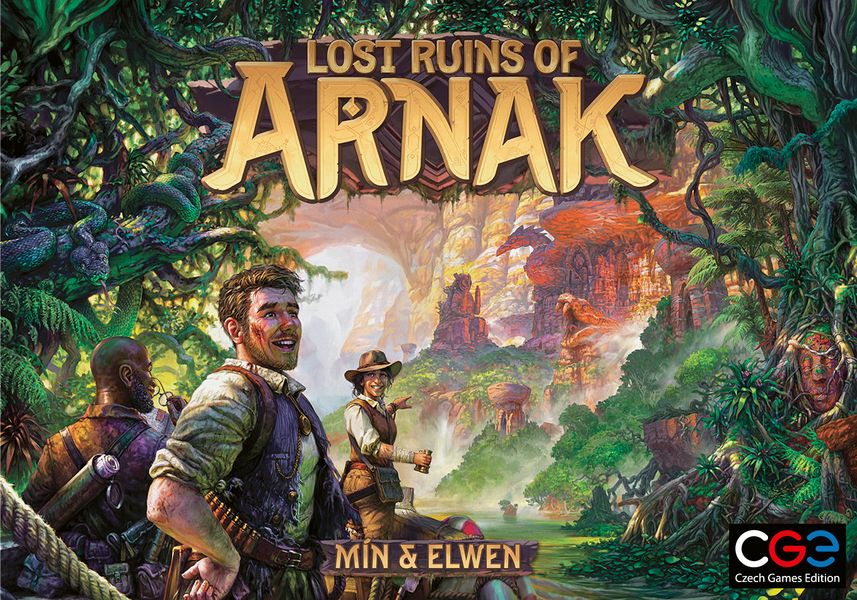
Publisher: Czech Games Edition
Release Year: 2020
Price: $$-$$$
Players: 1-4
Play Time: 30-120 minutes
Age Recommendation: 12+
Deck and Resource Building
Worker Placement
Competitive
In Lost Ruins of Arnak, players are tasked with leading an expedition to explore an uninhabited island. The game uses a combination of work placement, deck building and resource management in a game of adventure and discovery over the course of five rounds. The goal of the game is to lead the most successful expedition by gaining the most victory points through acquiring item and artifact cards, doing research, and overcoming the guardians who protect the ruins on the island.
Each round players have two archeologist meeples that can be used to explore the island by traveling to already discovered dig sites or new sites and picking up resources with the aid of their player decks. The starting player decks include cards that allow players to gather resources and to place their archaeologists on dig sites. As the game progresses, players can choose to upgrade their decks by purchasing item and artifact cards. These cards not only provide useful powers in game, but also are also worth victory points at the end of the game.
In addition to placing archeologists and purchasing item and artifact cards, players can choose to spend resources to to increase their position on the research track. Here players have two tokens that can be upgraded along the path to gain victory points, resources, and up to two assistants. Each assistant has unique capabilities which range from providing additional resources and movement to allowing players to exile cards from their player decks.
A round ends when each player has passed their turn because they have either run out of actions they can take or have accomplished everything they wanted to do in a round. After the fifth round, the game is finished and players total their victory points.


Promotional images from the publisher.
Our Thoughts
Nikki: I had a blast playing Lost Ruins of Arnak. During the game I couldn’t help but imagine myself as an “Indiana Jones” type adventurer on a grand expedition to uncover secrets and artifacts left behind by an ancient civilization.
The rules of Lost Ruins of Arnak may be straightforward but the combination of worker placement, deck building and the resource management mechanics can satisfy those who are looking for more strategic game play.
Beyond enjoying game play, I also found the game itself to be visually striking while being laid out in a way that was easy to engage with. I commend the game developers, designers, and artists for creating a game board that has both form and function.
Of all the games I demoed during BGG@Home I think that Lost Ruins of Arnak is the game most likely to make its way into our collection.
Maglev Metro

Publisher: Bézier Games
Release Year: 2021
Price: $$$
Players: 1-4
Play Time: 60-90 minutes
Age Recommendation: 14+
Tile Placement
Route Building
Competitive
Maglev Metro is a route building, tile placement, engine building, and pick-up and deliver game that rewards players who successfully optimize the efficiency of their metropolitan magnetic levitation rail system.
Players take turns placing route tiles, moving trains between stations, building stations, reallocating the robots who work on their trains, refilling passengers at stations, picking up passengers, and dropping off passengers at their destinations. Each passenger a player successfully picks up and drops off at the correct destination is allocated to their player board to either improve their rail system engine or increase their victory points.
To keep the focus of the game on efficiency and not area control, Maglev Metro features transparent route tiles, which allows players to place routes on the same spaces as their opponents. This effectively allows every player the opportunity to have access to all of the stations.
The end of the game is triggered when at least one passenger station of each of the four colors (pink, lilac, coral and purple) has been built and all of the passenger meeples have been placed at stations. At the end of the game, players total their victory points and the player with the highest number of points wins!



Promotional images from Bézier Games.
Our Thoughts
Nikki: Disclaimer: I have to admit that the only train theme board game that I have played prior to my demo play of Maglev Metro was Ticket to Ride. Given that, I may not have the same train theme fatigue that other players may experience.
Maglev Metro gives players a lot of choices each turn with a limited number of actions (players start with two actions a turn and can use passengers to upgrade to up to five actions per turn over the course of the game). This makes the strategic placement (especially early on in the game) of route hexes, stations and the robots on player boards key for players to create efficient rail systems.
Honestly, I thoroughly enjoyed playing Maglev Metro, even if some of my routes were poorly planned and my robots were haphazardly placed on my player board. I would love to play again and challenge myself to lay my routes out better and to use my robots more effectively each turn.
I wish I could have played Maglev Metro in person, because pictures of the components all look amazing, especially the trains and route hexes, and a simulator just doesn’t do them justice. Plus it is just really hard to place meeples in a tiny train using a game simulator.
New York Pizza Delivery

Publisher: AirLoom Games
Release Year: Kickstarter 2020
Price: TBD
Players: 1-6
Play Time: 30-120 minutes
Age Recommendation: 10+
Set Collection
Pick-Up and Deliver
Competitive
In New York Pizza Delivery, the goal is to build pizza places thorough Manhattan Island and fulfill orders that are within the reach of these stores. Order requests, which are deliverable to the “delivery zones” in each of the color-coded districts on the map, also include requests for specific ingredients that players must provide via their pizza place’s inventory (permanent resources) or ingredients in hand (one-time use resources). When a pizza is successfully delivered, a player is payed for the order, tipped an amount that is kept private until the scoring phase at the end of the game, and earns a Power Card which can be used to provide additional advantages to his or her pizza peddling emPIEre (yes…pun intended).
The game hilariously ends immediately when a third “Failed Health Inspection” card is flipped from the ingredients deck.
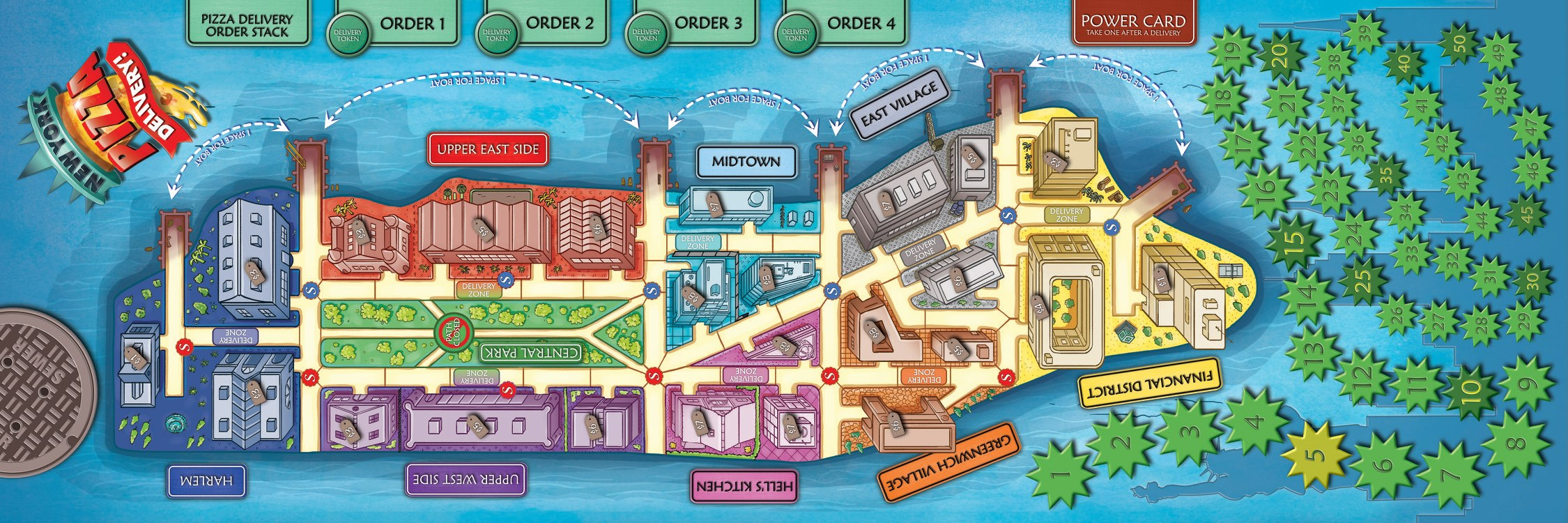


Promotional images from AirLoom Games.
Our Thoughts
Corey: This game was actually quite fun to play! I have to say, I was a little skeptical due to its overly whimsical theme. This isn’t the type of game I would normally play but because I love greasy New York-style pizza so much I thought I owed this one a shot.
Of all the games we tried this weekend, though, I think this one was the most “in development” so it sounds like there is still some work to be done here. That said, the game could benefit from some tuning. The Power Cards ranged from feeling extremely overpowered to rather useless and I benefitted immensely from one that essentially let me draw four cards of my choice from the discard pile nearly every other turn. I was told, this was very likely going to be changed. Additionally, the two and a half hour play time seemed a bit long for a game about delivering pizzas.
Overall, I think there are a lot of really cool things going on here and I think the theme suits it really well. Mechanically, there are some similarities to Splendor when it comes to the set collection elements but the addition of the board and development of pizza places and their delivery reach add a refreshing level of complexity to this. I look forward to seeing where this one goes when it reaches Kickstarter!
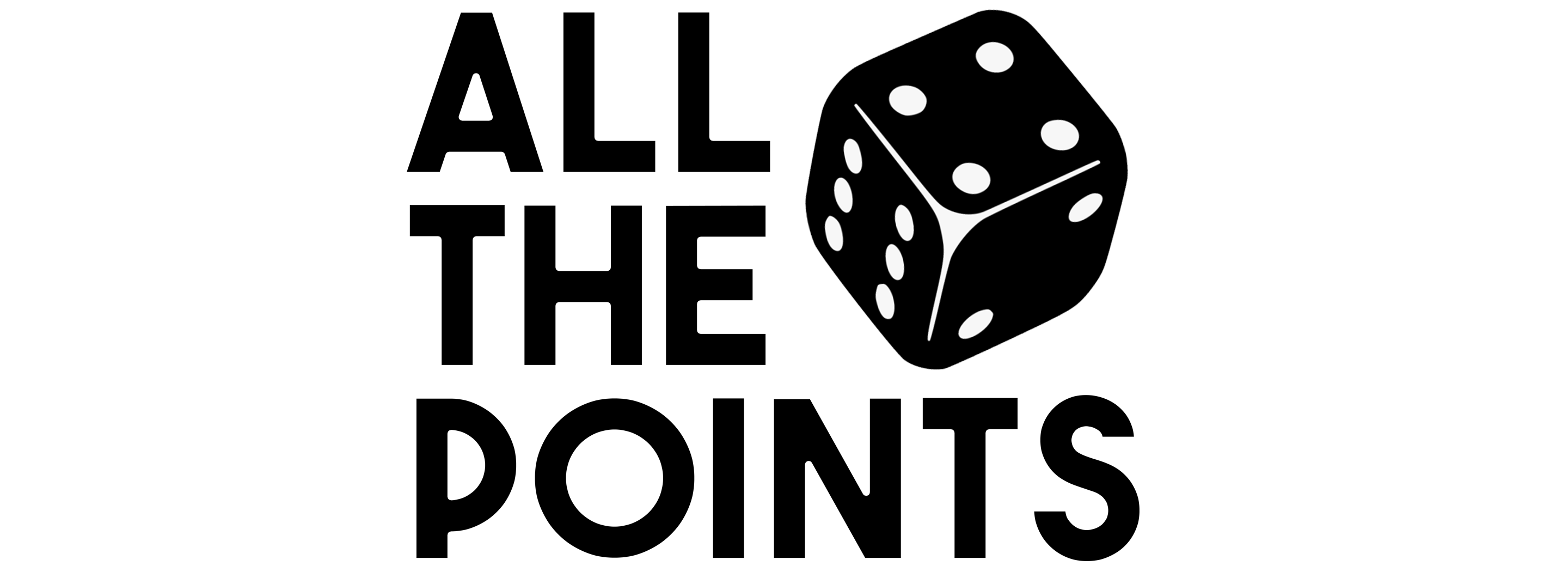
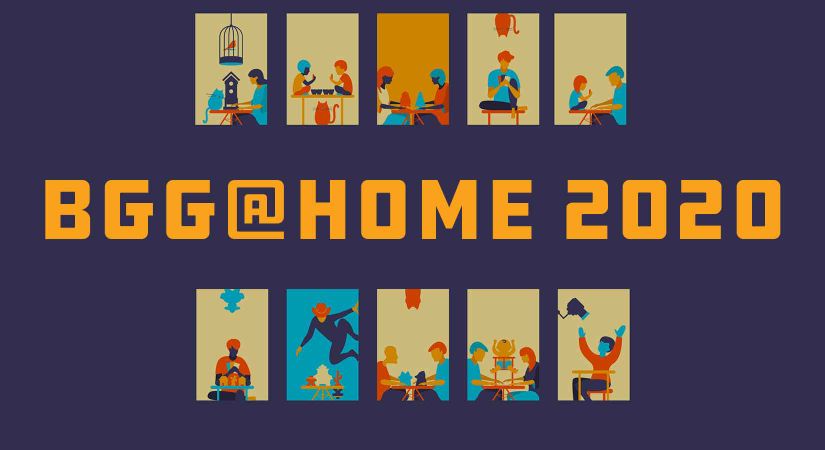
Hey guys. I thoroughly enjoyed all the reviews! This came at a great time for Laura and I since we are on the hunt for some new board games for our household. Thank you for testing some out and writing about them. Hope you guys are doing well, can’t wait to play board games with you all in person… some day in the future.
LikeLike